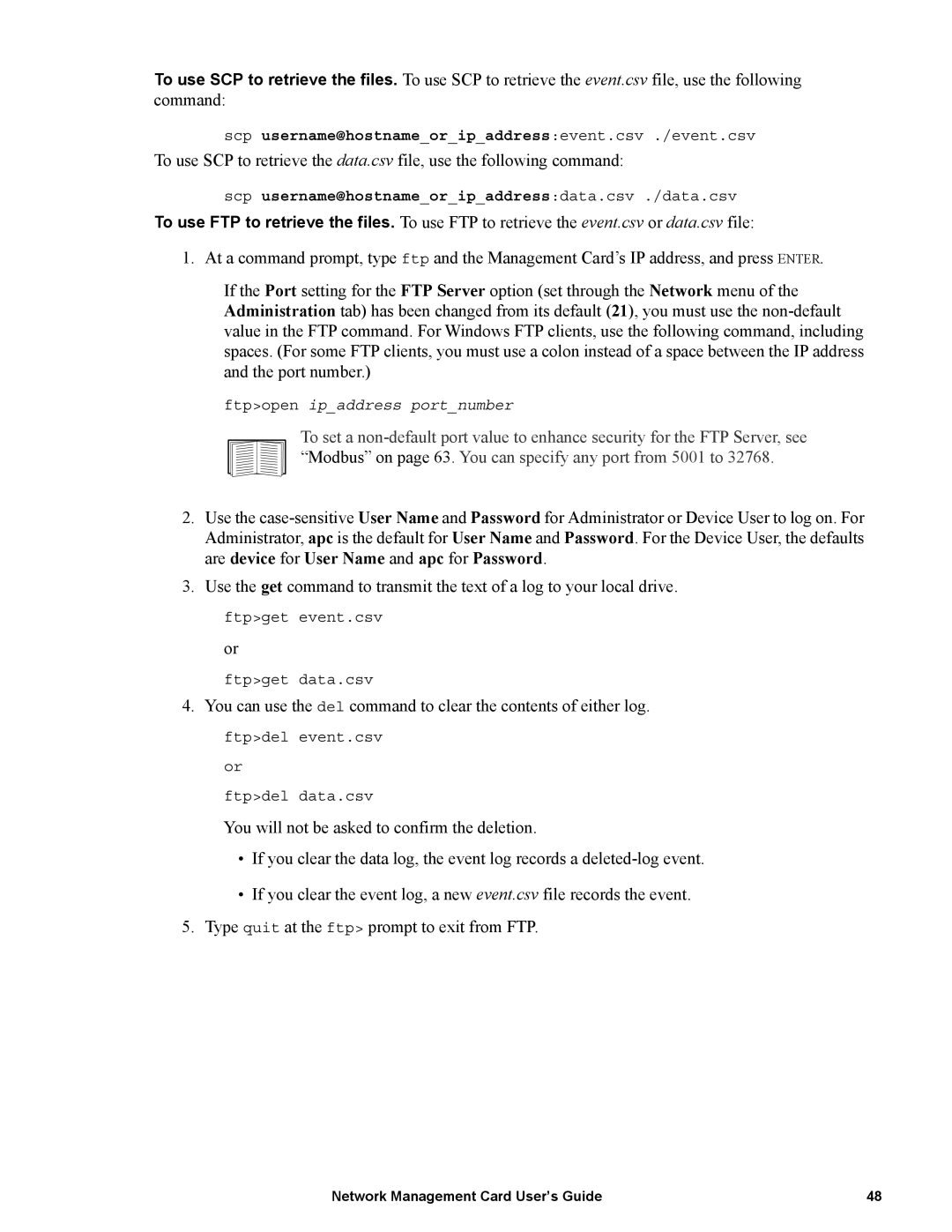To use SCP to retrieve the files. To use SCP to retrieve the event.csv file, use the following command:
scp username@hostname_or_ip_address:event.csv ./event.csv
To use SCP to retrieve the data.csv file, use the following command:
scp username@hostname_or_ip_address:data.csv ./data.csv
To use FTP to retrieve the files. To use FTP to retrieve the event.csv or data.csv file:
1. At a command prompt, type ftp and the Management Card’s IP address, and press ENTER.
If the Port setting for the FTP Server option (set through the Network menu of the Administration tab) has been changed from its default (21), you must use the
ftp>open ip_address port_number
To set a
2.Use the
3.Use the get command to transmit the text of a log to your local drive.
ftp>get event.csv
or
ftp>get data.csv
4. You can use the del command to clear the contents of either log.
ftp>del event.csv
or
ftp>del data.csv
You will not be asked to confirm the deletion.
•If you clear the data log, the event log records a
•If you clear the event log, a new event.csv file records the event.
5.Type quit at the ftp> prompt to exit from FTP.
Network Management Card User’s Guide | 48 |
